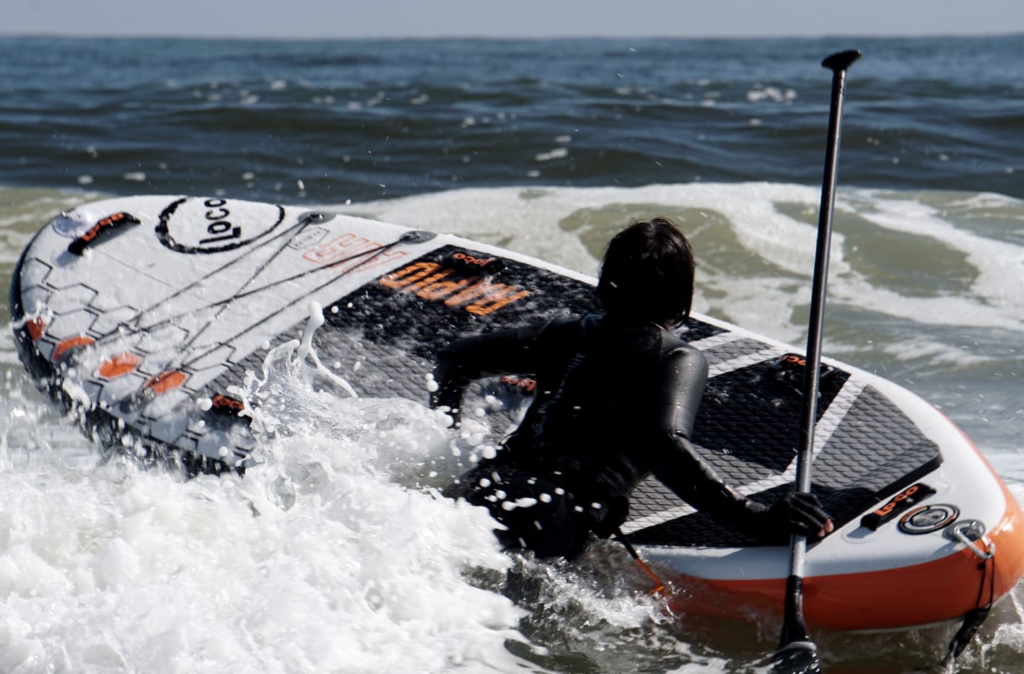
Determining whether to invest in a solid SUP board or an inflatable paddle boards variant can be a conundrum. ASI has delineated 13 pivotal factors including performance, cost, repairs, transport, and resale value, with an assessment of the advantages and disadvantages of each.
Performance
Hard Board
- Exhibits superior responsiveness and overall user experience.
- Typically swifter.
- Unmatched in wave riding capabilities.
- Adaptable to a broader spectrum of conditions.
- Lower waterline reduces wind impact.
- Varied construction options to match budget and performance requirements.
iSUP
- Nearly parallels hard board performance on flat water, contingent on high-quality brands.
- Competent performance but falls short of hard boards.
- Feels sluggish in imperfect or rough water conditions.
- More challenging to control in windy conditions, with a risk of being lifted out of the water.
Fins
Hard Board
- Removable fins, beneficial for international transport.
- Fin box systems can be intricate, with a risk of losing fin box plates and screws.
- Customizable fins for specific performance needs.
iSUP
- May have either fixed or removable fin setups.
Weight
Hard Board
- Weight varies based on performance needs and budget. Less expensive boards tend to be heavier, while lighter boards are pricier.
- Example: A 10ft 6’ board may weigh about 10.5 kg (10 to 12 kg range), or a 14ft carbon board can weigh the same or less.
iSUP
- Generally lighter, with a 10ft 6’ board weighing around 9.9 kg.
- Advances in material technology are making iSUPs lighter, often surpassing lower-end composite boards.
Cost
Hard Board
- Prices vary widely.
- Lighter boards are more costly.
iSUP
- High-quality iSUPs are expensive.
- Low-quality, potentially unsafe boards are cheaper.
Construction
Hard Board
- Robust, rarely break or crease.
- Typically have a solid foam core (EPS) coated with fiberglass, carbon fiber, or epoxy resin.
- Durability and weight are influenced by the number of coatings.
iSUP
- Diverse construction types from poor to high quality.
- Welded seam and double chamber are safest but costlier.
- Other constructions may deflate due to tears or valve leaks and can burst in hot weather.
Set Up
Hard Board
- No setup time required.
iSUP
- Requires time to inflate and deflate before and after paddling sessions.
- Needs a pump, either electronic or manual.
Transport
Hard Board
- Requires roof rack transport on a car, difficult to transport overseas.
iSUP
- Easy to deflate and pack into a backpack, fits inside a car, and convenient for air travel.
Storage
Hard Board
- Requires ample storage space, such as a garage.
iSUP
- Minimal storage space needed when deflated.
- Can be stored inflated to save time, requiring storage space similar to hard boards.
Safety
Hard Board
- Risk of injury if fallen onto.
- No risk of deflation, even if broken, it will float and can be used in emergencies.
iSUP
- Softer, reducing injury risk upon impact.
- Risky if deflation occurs on water.
Resale
Hard Board
- Good resale value if maintained properly.
iSUP
- More resistant to wear, with potentially better resale value.
Second Hand Market
Hard Board
- Generally limitless availability.
iSUP
- Thriving in the UK and Europe, may not be as prevalent in other regions.
Damage
Hard Board
- Susceptible to damage, especially off the water.
- Composite boards may develop chips over time, which is environmentally unfriendly and aesthetically unpleasing.
- Untreated damage can make boards heavier and less appealing.
iSUP
- Highly damage-resistant.
- More likely to be damaged during transport than while paddling.
- Advantageous in terms of resilience to bumps and drags.
Repairs
Hard Board
- Easily repairable at home with basic knowledge. Professional ding repair services for SUP boards are accessible.
iSUP
- Harder to find reputable repair services.
- Often need to send iSUPs away for repairs.














